After a slight pandemic-related slow-down in 2021, 2022 has been a very busy year so far in terms of smartphone launches, leaving consumers who are ready to upgrade their current device to the latest generation with almost too many options to choose from. With the year approaching its midpoint, and many important device launches already behind us, now seems like a good time to look back at the large number of tests we have undertaken at DXOMARK during the past few months and pick our favorites, to make it easier for you to find the device that is best suited to your needs.
We’ve made a selection of phones that perform well not only under one or two of our protocols, but across the board — Camera, Audio, Display, Battery and Selfie. To offer something for every budget, we’ve also split things up by price segment.
Ultra Premium: Crème de la crème
With most phones in the Ultra Premium segment (launch price of $800 and up) being flagship devices of their respective brands, engineers and designers have to make fewer cost-related compromises than at lower price points and can often try to move the boundaries of what’s currently possible in terms of smartphone technology. Phones in the Ultra-Premium category tend to use high-end components all around, aiming for top performance in all areas.
In this segment we have observed a lot of improvement over the past year or so and, as usual, the camera is one of the main areas that manufacturers focus on. With the latest generation of devices, we have seen significant improvements in image quality when using the tele zoom. Larger sensors and wider apertures in ultra-wide cameras mean better detail, lower noise, and a wider dynamic range at the widest end of the zoom range as well. As a result, images show better textures and more detail in the very brightest and darkest parts.
In addition, wider angles of view allow photographers to squeeze more of the scene into the frame, which is great for taking pictures of large groups in small space, for example. Most flagship models now offer 13mm equivalent lenses on their ultra-wide modules. Other testers also saw noticeable improvements compared to previous device generations in terms of night-shot image quality and HDR video, offering better textures and detail in the brightest and darkest parts of videos recorded in difficult high-contrast conditions. In addition, new in-house developed chipsets offer engineers more options to choose from to engineers.
We have seen significant improvements in image quality when using the tele zoom.
In terms of audio, most ultra-premium devices continue to provide a good user experience, but not much has changed when it comes to the quality of playback and recording. In the display category, we have seen improvements in brightness, but those do not always mean that displays are more readable. Most manufacturers also use LTPO (low-temperature polycrystalline oxide) panels in this class, which feature adaptive refresh rates. This way the device can optimize the refresh rate for the type of content that is being shown on the screen.
On the battery front, Ultra Premium phones loaded with demanding new features continue to struggle overall with autonomy. Heavy users will have to find a power outlet sooner or later. Otherwise, charging speed is where smartphone manufacturers currently battle it out in the Ultra Premium segment in terms of battery performance. Some of the latest phones in this class can be fully charged during a short coffee break.
For detailed device performance information, check out the protocol-specific test results on dxomark.com. Now, without further ado, here is DXOMARK’s list of the best Ultra Premium smartphones 2022 so far.
Apple iPhone 13 Pro Max
Released in September 2021, Apple’s flagship iPhone 13 Pro Max provides one of the best all-around smartphone experiences. The smooth interaction between the latest hardware and the software attests to the attention Apple pays to tuning and getting the most out of the device, no matter what the
use case.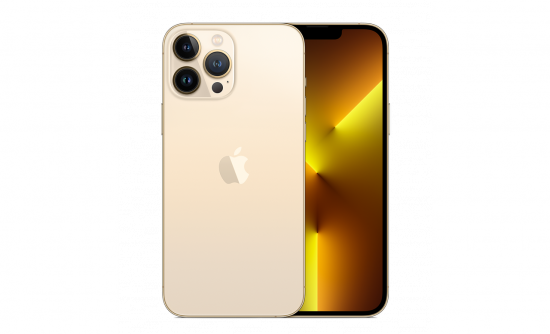
This was particularly evident in the phone’s display performance, where it took the lead in our Display ranking because its screen was so readable in all different kinds of use cases, whether you want to watch a movie outside in sun or indoors in the dark. With a dedicated brightness tuning for HDR, realistic highlights and incredible contrast, any content viewed on the display looks brilliant, making the iPhone an excellent choice for any type of content consumption.
The camera experience particularly shines in video, where the iPhone 13 Pro Max sets the standard with its default Dolby Vision HDR format video settings. Video exposure is very stable and the autofocus provides improved tracking and very smooth refocusing at the right moments. The outstanding overall camera performance is rounded out by excellent still images, with high-quality images in all shooting situations, especially for action shots, and improvements over the previous generation in terms of image detail and in backlit situations.
Unlike many of its power-hungry Ultra Premium competitors, the 13 Pro Max did also very well for battery. Despite using the smallest battery for a flagship device, the Apple managed to outperform all other phones in the segment in the perhaps most challenging area of all – autonomy – thanks to its excellent efficiency. The device showed that its autonomy can adequately endure the demands of an ultra premium phone and that its autonomy is on-par with bigger batteries in phones that have less-demanding features.
Google Pixel 6 Pro
The Google Pixel 6 Pro, with its proprietary new Tensor chipset, does really quite well in most categories. Google made some huge strides in the camera department with the Pixel 6 Pro. To keep up with other devices in this segment, the Pixel 6 Pro is the first Pixel to have a triple camera set up, and the sensor in its primary camera is twice the size of its predecessor. The Pixel 6 Pro excels at taking portraits and capturing the nuances of all skin tone types. Its zoom range goes from an ultra-wide angle equivalent of 12.5mm to a tele of 102.6 mm, with excellent image detail even in long-range tele shots. Thanks to excellent video stabilization recorded footage is very stable.![]()
And yet, it is with the Selfie camera that the Pixel 6 Pro really stands out, outperforming such heavy weights as the iPhone 13 Pro Max and the Samsung Galaxy S22 Ultra. Whether photos or videos, the Pixel 6 Pro’s front camera delivers high-quality images, with accurate skintones, exposure, and few artifacts. That’s bound to please any Instagrammer.
It’s actually also a good device for gaming, with a display that provides a smooth and accurate touch, as well as a decent response time, as well as audio playback in stereo. The positioning of the speakers means they are hard to block with your fingers when playing games. Overall the Pixel 6 Pro showed a balanced performance in audio, doing well in both playback and recording.
While taking all those pictures and playing games in your Pixel 6 Pro just keep in mind that battery is not the device’s strong point and keep a charger at hand. Autonomy is less than 2 days in moderate use and the charging experience is overall poor, especially when charging wirelessly.
Samsung Galaxy S22 Ultra (Exynos)
Known for loading its flagship Galaxy phones with top-of-the-line specs, such as the longest zoom or brightest display, the Galaxy S22 Ultra is a device of superlatives. But best specs don’t necessarily mean best scores.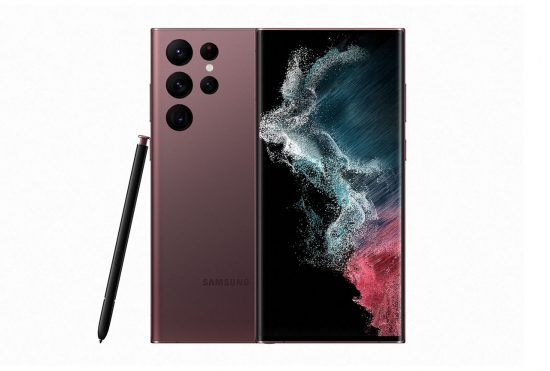
The Galaxy S22 Ultra (Exynos) earns its place on this list mainly for its display performance, where it earned a top score not only for readability but also for video thanks to its faithful rendering of HDR10 content. Samsung has fine-tuned the tone mapping of its S22 Ultra display to the point that the device provides an experience that is similar to watching TV.
Combine that with the clear audio playback from the S22 Ultra’s stereo speakers, and you’ve got one powerful on-the-go entertainment system. In the camera department, the S22 Ultra flagship grade long-range zoom (with an equivalent focal length of up to 230 mm) produces images with quite good detail, giving mobile photographers plenty of options for capturing subjects at any distance. However, capturing the decisive moment can be a bit more tricky with the S22 Ultra because a fast autofocus is not one of the camera’s strong points.
Also be sure to pack a charger because the trade off for all the video display quality is that the battery doesn’t quite hold up, with autonomy for both the Snapdragon and Exynos versions at less than 2 days.
Premium: Top performance with some compromises
Premium segment devices (launch price of $600-799) differ from their “money-no-object” Ultra Premium counterparts in so far that designers might have to make compromises in some areas when picking hardware components. As a result, for example, camera specifications and performance in the Premium segment can vary a lot between devices, with cameras showing performance strengths and weaknesses in different areas. If you are looking to buy a Premium phone and the camera is a priority, it’s therefore important to find the device that is best suited to your specific photographic needs. In terms of recent technological developments, compared to the Ultra Premium segment, there seems to be generally less evolution. Many devices offer good zoom quality but are still some way off the flagship class in this respect.
Camera specifications and performance in the Premium segment can vary a lot between devices.
Unlike Ultra Premium phones, many Premium devices do not feature adaptive display refresh rates and maximum brightness of the displays tends to be lower as well. So to make up for the lower spec display hardware on Premium phones, display tuning has to be spot on in order to compete with Ultra Premium phones. Things work in a similar way for audio hardware and tuning.
For detailed device performance information, check out the protocol-specific test results on dxomark.com. Now, without further ado, here is DXOMARK’s list of the best Premium smartphones 2022 so far.
Apple iPhone 13
The Apple iPhone 13 shares most specs with the smaller iPhone 13 mini but comes with a larger Super Retina XDR display. In our tests the iPhone 13 was very balanced, delivering good to excellent results across the board.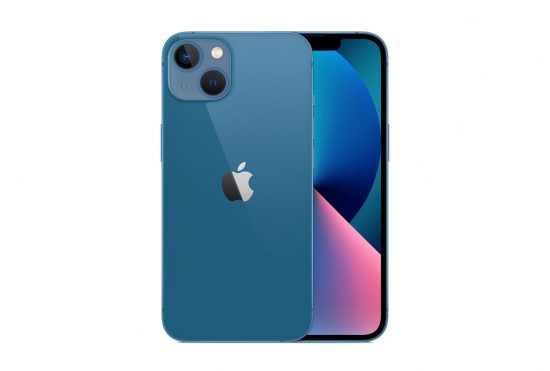
Its display offers very good performance across all use cases and the best video playback experience in the Premium segment, with support for HDR10 and Dolby Vision and a focus on color and motion.
The excellent display is accompanied by very good and consistent audio playback but the iPhone 13 is also a great choice for users who want to record audio. Both front and rear cameras tested were among the best in the segment. The rear camera´s video performance is the very best you can find in this class, with a very wide dynamic range and beautiful colors, thanks to the Dolby Vision HDR format. When shooting still images the camera is also capable of rendering nice color, even in backlit scenes and other difficult light situations.
To enjoy the Apple´s great display, sound, and cameras all day long you need a good battery and the iPhone 13 does not disappoint in this respect either. Its battery is relatively small in terms of pure numbers but offers excellent discharge efficiency and therefore good autonomy, and wireless charging works very well, too.
Xiaomi 11T Pro
The Xiaomi 11T Pro follows on the Mi 10T Pro as Xiaomi´s contribution to the Premium price segment. In our testing it shone especially under the DXOMARK Camera and Battery test protocols.
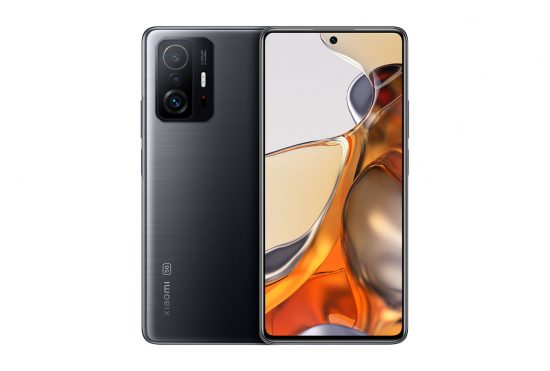
The main camera comes with the best autofocus system in the Premium segment. Its zero-shutter-lag capabilities allow for very quick image capture when the shutter button is pressed. This means it’s easier to take an image of the decisive moment and of people in motion than with its rivals in the segment. In general still image camera performance is good in most shooting situations in bright light and video clips recorded on the 11T Pro in bright light or under typical indoor conditions offer good detail.
Battery anxiety is not something Xiaomi 11T Pro users need to worry about. The device offers an outstanding charging performance, achieving 80 percent in only 18 minutes and a full charge in 30 minutes, so even a short coffee break with the phone plugged in will give you many additional hours of use. The Xiaomi also has the best battery autonomy in its class, a whopping 56 hours with moderate use.
The 11T Pro is not among the very best Premium devices for Audio and Display but still performs on a level in these categories that will keep most users happy, making it overall an easy recommendation, especially for those who prioritize camera and battery.
Samsung Galaxy S22 (Exynos)
The Samsung Galaxy S22 (Exynos) is the junior model in the Korean company’s 2022 top-end S-series, and relies on the same Exynos 2200 chipset as the flagship S22 Ultra. However, it comes with a smaller and lower-resolution display than the Ultra, and doesn’t have the larger device’s S-Pen stylus or 10x tele lens.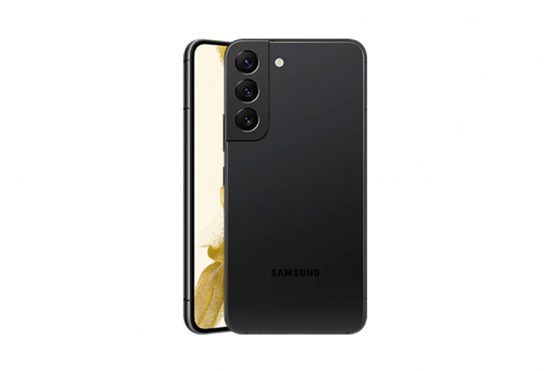
The Samsung performs well across several of our test areas and our testers especially recommend it for its audio performance. Sound is clear in both playback and recorded audio files. Recording also offers great dynamics but on the downside playback can lack bass and sharpness.
The Galaxy also does well for Display where it is among the very best in the Premium segment. Appropriate brightness and faithful colors make the Samsung Galaxy S22 (Exynos) an ideal smartphone for viewing streaming content. The main camera does a good job as well and earns the S22 a place among the best in its class. In photo mode the Samsung captures very nice and vivid color, good exposures, and a wide dynamic range. The tele zoom works well at close and medium range and video clips offer excellent dynamic range in difficult high-contrast scenes.
The Galaxy S22 really only lags behind the Premium segment competition in the battery category, so isn’t ideal for power users who spend a lot of time away from charging points.
High End: Great battery experience
In the High-End segment (launch price of $400 to $599), consumers can find a lot of performance at more affordable prices and in the battery categories, High-End phones often have advantages over their Ultra Premium and Premium counterparts. They often come with scaled-down (and therefore less battery-hungry) features which means they currently provide the best compromise when it comes to the overall battery experience.
As for cameras, our testers have not seen any significant improvements in the latest generation of High-End devices over the previous one, so purely from a camera point of view there is no need for an immediate upgrade if your current device is still fairly new. Generally High End devices often come with smaller image sensors than higher-priced models, or lack features like optical image stabilization or dedicated tele lenses. However, thanks to optimized tuning in the best devices they are capable of impressive image results in many shooting situations. This is particularly true for shooting with the primary camera and video recording but given the aforementioned hardware limitations, High-End devices mostly lag behind the more expensive models in terms of zoom image quality. The Google Pixel is somewhat of an exception to this general rule and really pretty good at all areas of imaging.
Thanks to optimized tuning, some High-End devices are capable of impressive results.
For the displays, many manufacturers will make some compromises in terms of readability, and brightness is not usually up to the Premium or Ultra Premium levels. You won’t typically find any adaptive refresh rates in this segment either. In terms of audio hardware, some High-End devices only feature single mono speakers, which makes it hard to compete with dual-speaker setups. Still, the best High-End smartphones are capable of providing very pleasant overall display and audio experiences.
For detailed device performance information, check out the protocol-specific test results on dxomark.com. Now, without further ado, here is DXOMARK’s list of the best High-End smartphones in 2022 so far.
Google Pixel 6
![]()
For those who are after excellent camera, audio, and display performance without spending Ultra Premium money Google’s Pixel 6 device is an excellent pick. Its camera is the best in the High-End segment by quite a margin. It does an excellent job on portrait images and captures good detail at close and medium range tele settings, especially when considering that the Pixel 6 does not come with a dedicated tele camera.
The Pixel 6 clearly benefits from the tuning efforts that have gone into the Pixel 6 Pro and the overall image quality between the two models is very close. The main difference is the Pro model’s dedicated tele camera. If you can live without it, the vanilla Pixel is an excellent alternative.
If you are more of a gamer than a photographer, the Pixel 6 is a good choice as well, thanks to a display and sound capabilities that are both very suitable for the task. The screen’s 1100 nits max brightness is the highest in this segment (on par with the Samsung A52/A53) and the smooth and accurate touch allows for comfortable casual gaming. Audio playback is clear with good dynamics, and tonal balance is clear and faithful when recording sound, completing the Pixel’s excellent all-around performance for its class.
Battery performance is one of the few areas where the Google Pixel 6 does not shine, delivering an overall below-average performance for this class. 2 days of autonomy in moderate use should be good enough for most users but charging time was quite long, taking 1 hour and 3 minutes to reach 80% of full capacity.
Apple iPhone SE (2022)
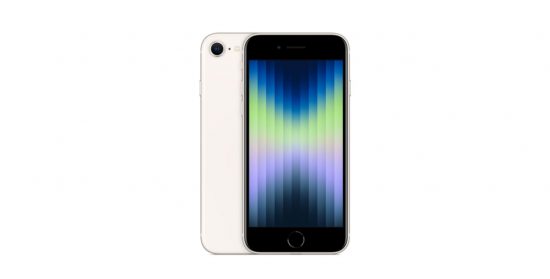
Like the Pixel, the iPhone SE does well in most areas and is a great option for those who are invested in the Apple ecosystem but don’t need the bells and whistles of the more expensive iPhone models.In the camera tests it proved to be a strong and consistent performer all around. It lacks ultra-wide and tele cameras but the 12MP primary camera manages to capture images and videos with good detail. Thanks to a fast and accurate autofocus it’s easy to capture the decisive moment, with the focus on the right spot.
Unlike some rivals in the segment the SE comes with stereo speakers, which provide overall good audio playback, making the phone especially suitable gaming and watching movies. When recording audio it is particularly good at recording loud concerts, thanks to very little distortion. The device also comes with an excellent LCD display that offers smooth and accurate touch responsiveness which again makes it a good option for gaming, despite having a 60 Hz refresh rate.
Battery on the other hand is not a strong point. The battery has a very small capacity of 2018 mAh and offers only 1.5 days of autonomy in moderate usage. At 51 minutes to charge 80% of the battery capacity charging is slower than average as well.
Xiaomi 11T
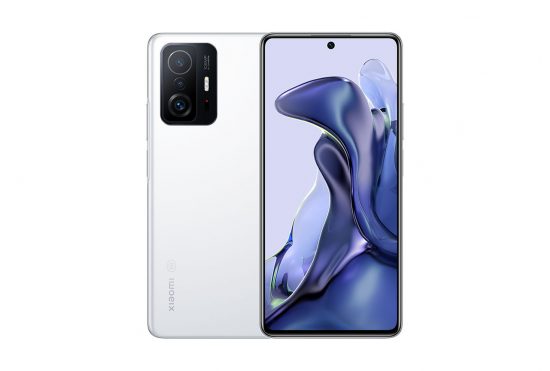
The 11T is the middle offering in Xiaomi’s T line and a lower-priced alternative to the brand’s flagships, while still offering some impressive features. Our testers were especially impressed by the 11T’s Display and Battery performance. The 6.67-inch AMOLED display offers the best readability in the segment. The device is tuned to adapt readability and brightness to the environment and ensure smooth transitions. It also offers the best video viewing experience in its class.
The battery provides excellent autonomy for this segment (59 hours of moderate use) and recharging with 60 percent or less capacity remaining gets you an additional 8 hours of autonomy which should get you even through the toughest work days.
The Xiaomi 11T is no slouch in our other test categories either. It’s among the better phones for Audio in the High-End segment, thanks to a natural and satisfying tonal balance and good low-end and bass for a smartphone. It also performed well as a recording device across most use cases. The camera scores points with its excellent texture/noise trade-off in still images and nice colors in video.
Oppo Reno6 5G
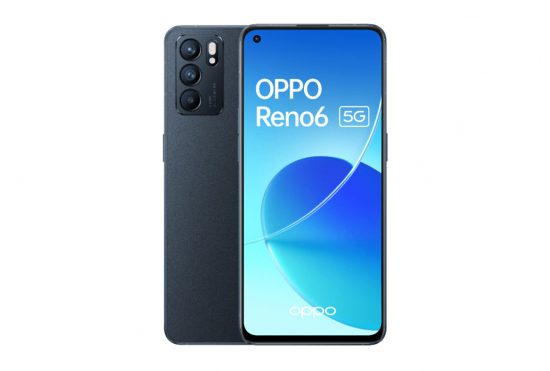
The Reno6 5G‘s strong point is its battery performance. Charging efficiency is outstanding and charging times are very good. When under 50 percent capacity the device gains a whopping 10+ hours of autonomy with only a 5-minute charge, so even the quickest of coffee breaks next to a power outlet will get rid of your battery anxiety.
The device is also a decent camera option in the High-End segment but better alternatives are available if photo and video capture is a priority. It delivers a middle-of-the-pack performance for Display, where colors are faithful the outdoor image enhancement is unstable. With a single mono speaker, the Oppo isn’t your first option for audio playback but it can make a decent recording device where it offers great loudness and signal-to-noise, thanks to an efficient noise cancellation algorithm.
Oppo Find X5 Lite
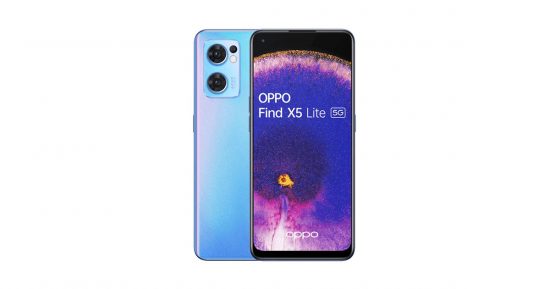
Like its stablemate the Reno6 5G, the Oppo Find X5 Lite is the most affordable model in the Chinese manufacturer’s Find X5 series and is an interesting option in the High-End segment, especially when battery performance is high up the list of priorities. The device offers good charging times, reaching 80 percent in only 22 minutes, and excellent charging efficiency. In addition, 2.5 days of autonomy in moderate use is above-average for the segment.
The device also does reasonably well for camera, with well-exposed still images when the light conditions are not too challenging, and a wide dynamic range in video footage. However, both photo and video results drop in quality in more difficult and lower light conditions. In the audio category, the phone is held back by its single mono speaker, and while the display offers accurate touch and good readability in low light, our testers also noted a lack of brightness in indoor and outdoor conditions and color issues when watching HDR10 videos.


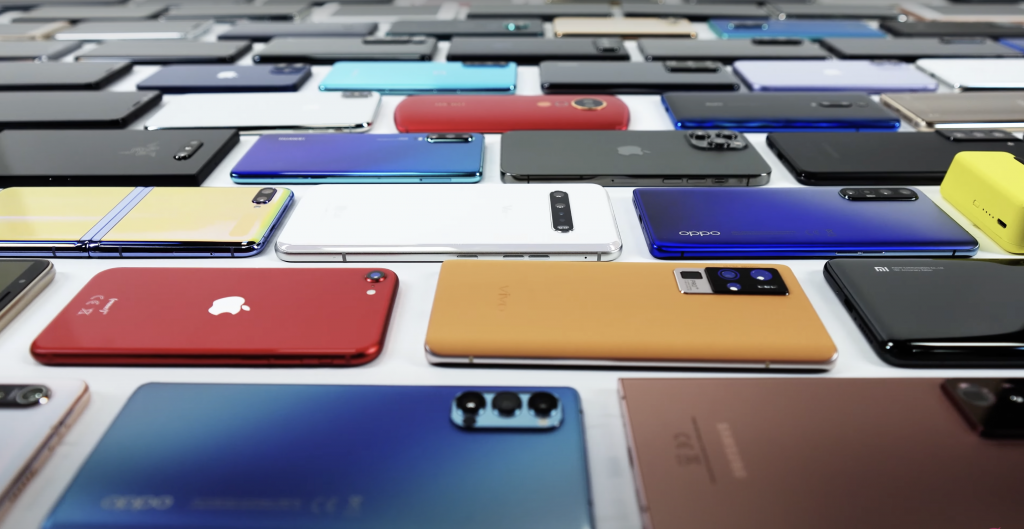
DXOMARK encourages its readers to share comments on the articles. To read or post comments, Disqus cookies are required. Change your Cookies Preferences and read more about our Comment Policy.